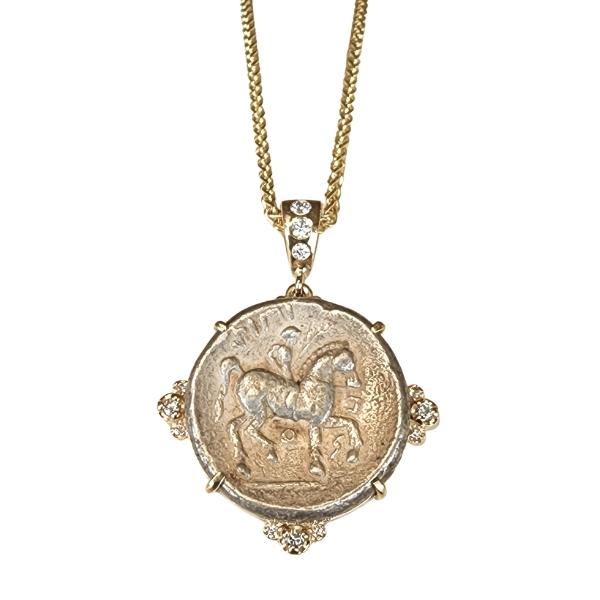
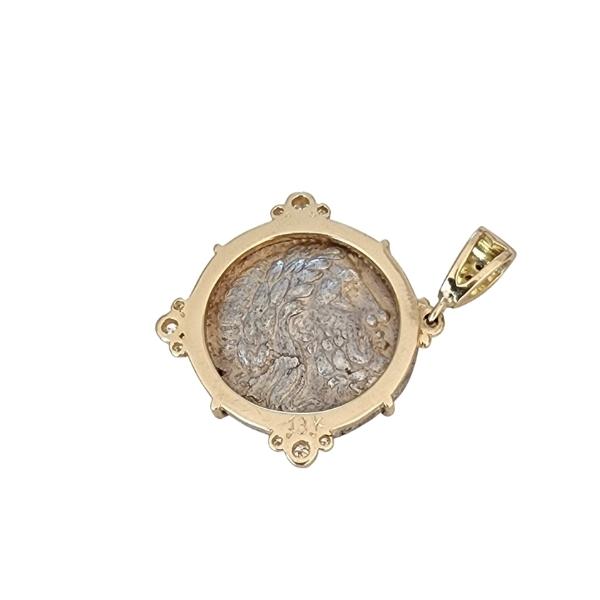
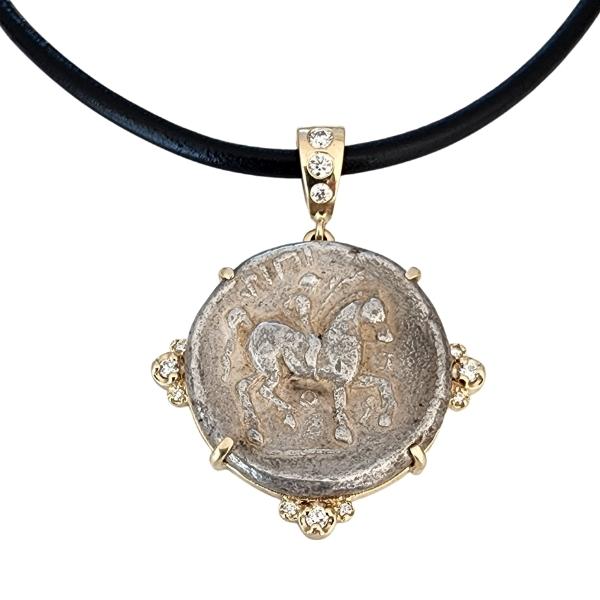
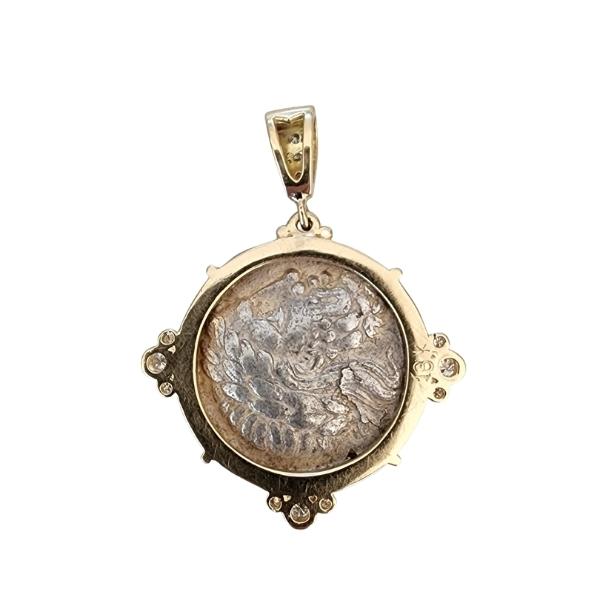
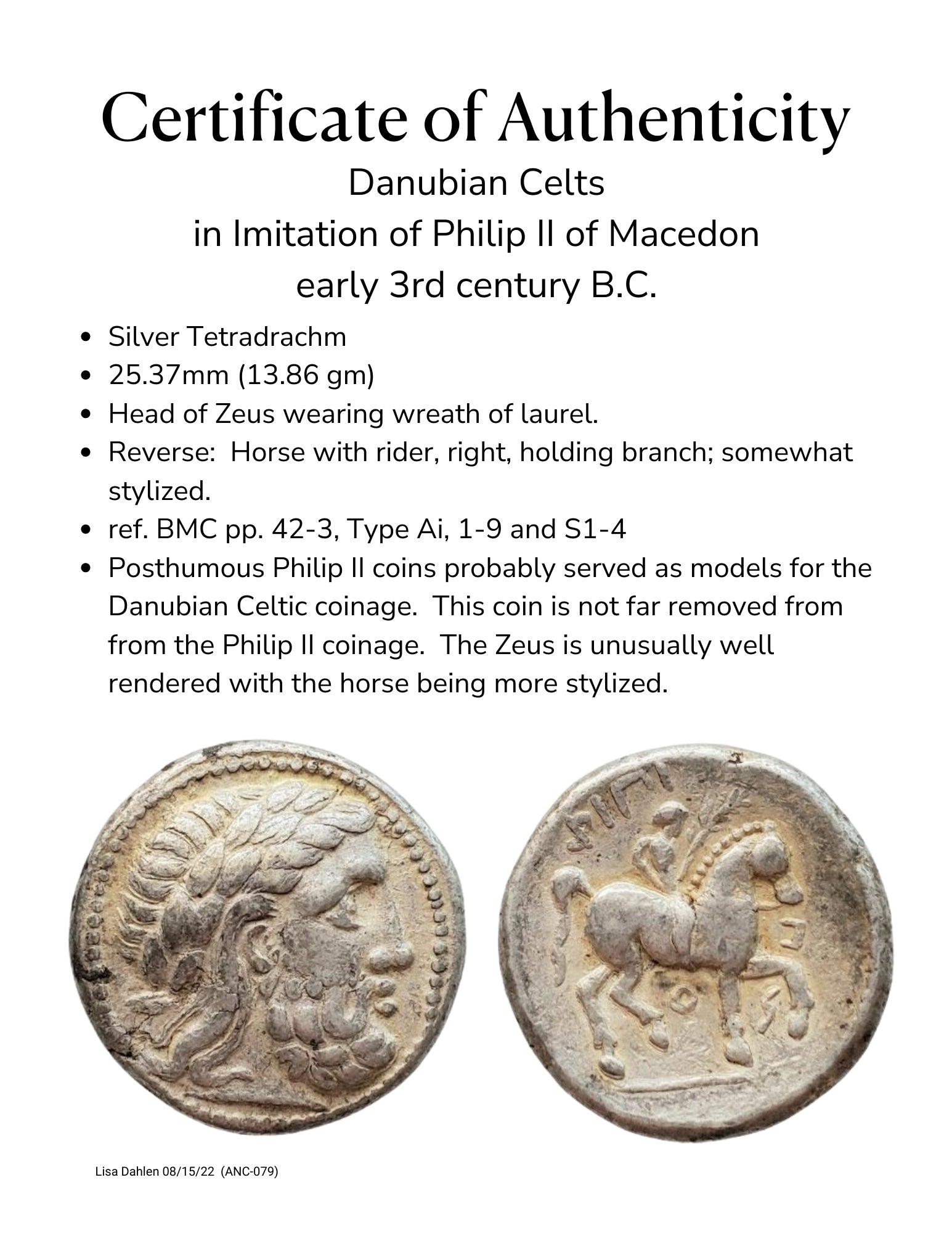
Danubian Celt Tetradrachm early 3rd century BC (079)
This ancient Celtic silver tetradrachm coin features a beautifully rendered horse and rider artfully framed in gold and diamonds.
The reverse side of the pendant features an extraordinary image of Zeus.
The coin is an early Celtic copy of the Greek Philip II Tetradrachm and closely resembles the original.
Coin size: 25mm silver tetradrachm.
18kt recycled gold mount, accented with Canadian-sourced diamonds.
Mounting fabricated in San Francisco, CA.
One of a kind with a Certificate of Authenticity.
Grade: an attractive VF, a scarce early Celtic derivation of Macedonian tetradrachm.
Chain not included; available separately. See Chains
Dated: early 3rd century BCE
Choose options





This ancient Celtic silver tetradrachm coin features a beautifully rendered horse and rider artfully framed in gold and diamonds.
The reverse side of the pendant features an extraordinary image of Zeus.
The coin is an early Celtic copy of the Greek Philip II Tetradrachm and closely resembles the original.
Coin size: 25mm silver tetradrachm.
18kt recycled gold mount, accented with Canadian-sourced diamonds.
Mounting fabricated in San Francisco, CA.
One of a kind with a Certificate of Authenticity.
Grade: an attractive VF, a scarce early Celtic derivation of Macedonian tetradrachm.
Chain not included; available separately. See Chains
Dated: early 3rd century BCE
